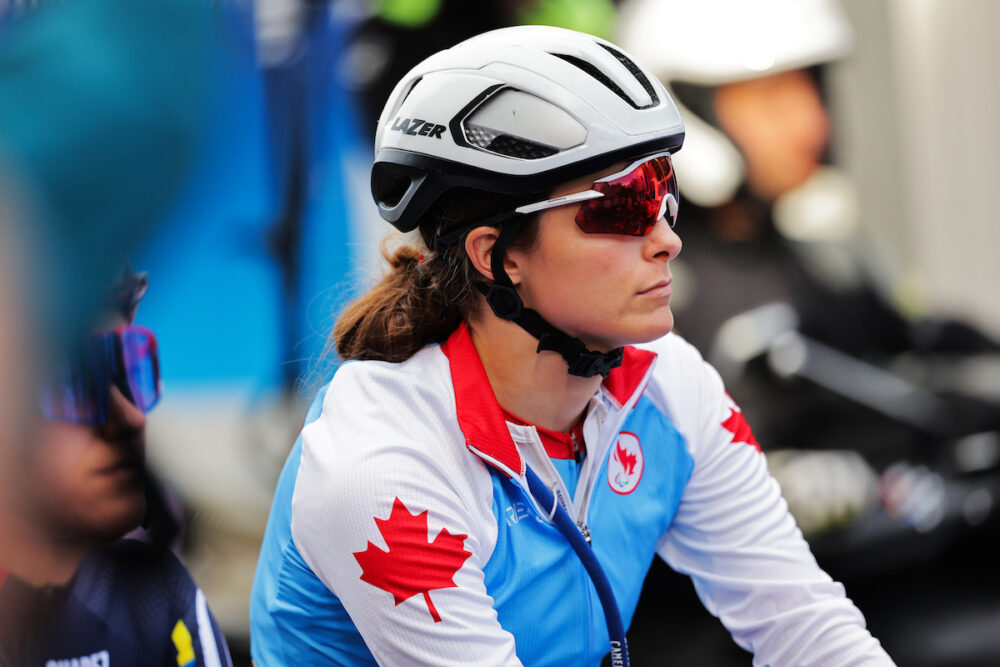Share
Cycling Canada Gears Up for Success with a Streamlined DAM System
Cycling Canada streamlined asset management with PhotoShelter, making image searching, sharing, and athlete access effortless.
- 50k+ assets housed in PhotoShelter
- 130+ asset retrievals automated per month through PhotoShelter
- 65k+ total followers across social media channels

Cycling Canada stops spinning its wheels
Cycling Canada serves as the nation’s governing body for cycling, overseeing everything from grassroots programming to Olympic- and Paralympic-level competitions. Since 1882, the nonprofit organization has been dedicated to inspiring Canadians to ride while supporting athletes on their journey to the podium.
But with thousands of photos coming in from events across the world, their storage and sharing system just wasn’t cutting it. Finding the right image was a hassle, and partners were constantly asking for files they couldn’t easily access.
The challenge: Stuck in the wrong gear
Caroline Soble, Communications Manager at Cycling Canada, juggles thousands of images from different photographers, events, and campaigns. Her team relies on these visuals for social media, press releases, and partnerships, but management of these files was a nightmare.
Before PhotoShelter, they faced three big challenges:
- Files were impossible to find. With photos stored in Microsoft OneDrive and other scattered folders, there was no clear way to organize them. Digging through files wasted time, and if a key image was missing, tracking it down was frustrating. “We’ve been making efforts to optimize… expanding our sharing capabilities, using the Portal settings, and really refining the organization to better reflect how we use photos and find them more easily,” said Caroline.
- Sharing was a hassle. Media, sponsors, and partners frequently requested images, but Cycling Canada had no easy way to provide access. Manually sending files was inefficient, and protecting image rights was difficult without proper permissions. “We’re a sports organization. Everybody wants the photos,” Caroline explained. “For example, the media might want something for a press release or they’re writing about an athlete and they need an image of them winning the medals at the last Games. We find that and give that to them.”
- Athletes had no access to their own photos. Cycling Canada’s library included key moments for athletes, but there was no system for them to download and use their own images. That meant missed opportunities for promotion. “For our athletes, we’re working on implementing athlete-sharing rights when we do our photography contracts. That way, at the end of a project we can email all the athletes and say, ‘Look at all these super cool photos. You can use them on your own profiles.’”
“We get a very large volume of photos from a wide variety of sources. So with file organization, you really have to be on top of it – otherwise, it just becomes a jumbling mess. And if you’re adding that to an existing Microsoft structure that’s not specifically created and tailored for photos, it can be a little bit difficult… PhotoShelter brought enhanced visual imagery management.”
Caroline Soble, Communications Manager, Cycling Canada
The solution: Shifting into a smoother workflow
Cycling Canada would spend way too much time searching for the right photos and figuring out how to share them. It was frustrating, messy, and slowed everything down. Now, with PhotoShelter, everything just works. Finding images is easy, sharing them is effortless, and the team can finally focus on telling great stories instead of digging through folders. Here’s what changed:
- A structured system makes finding files easy. Cycling Canada set up a clear, logical folder structure in PhotoShelter, sorting images by year and discipline. No more endless scrolling. Now, they can find the right image in seconds. “PhotoShelter is a robust digital asset management tool with a library and all the associated capabilities and functions that you might need with managing those photos.”
- Sharing is instant and secure. With PhotoShelter’s permission settings, Cycling Canada can grant media, sponsors, and partners access to specific images. No more email requests or file transfers; everyone gets what they need when they need it. “For big partners, we might give them download permission,” Caroline explained. “Their logos are featured pretty prominently on a lot of our jerseys, and they have rights to use those images in their editorial coverage.”
- Athletes can grab their photos. By securing proper usage rights in photography contracts, Cycling Canada is rolling out access for athletes to download and share their own images. It’s a win-win: more exposure for the sport, and athletes get high-quality shots for their personal and professional use. “At the end of a project, we can email all the athletes and say, ‘Look at all these super cool photos. You can use them on your own profiles.’ We know it’s going to be a huge hit,” said Caroline.
“The majority of our use is for our own content calendar. If we’re doing a preview release looking forward to the Canadian Cycling Championships, for example, we’ll go back through PhotoShelter, look at last year’s, and pull up the right image to pair with it. Or we’ll use PhotoShelter if we need images for National Coaches Week, and we have to find pictures of our coaches at different events. So the primary usage is having an easily accessible photo bank for content creation.”
Caroline Soble, Communications Manager, Cycling Canada
Cycling Canada crosses the finish line with PhotoShelter
With PhotoShelter, Cycling Canada isn’t wasting time hunting for images or manually sending files. Their team, partners, and athletes now have a smooth, efficient system that works for everyone. Managing photos used to be frustrating; now, it’s effortless.
“It all comes down to photo usage rights. For photographers, those contracts are pretty clear and photographer relationships are really affected if you misuse those rights. If you haven’t specified that you can share with an athlete and then an athlete posts on their personal page, they’re gonna get mad at you if you share it. So for us, these permission settings are about protecting our photographer relationships… it’s really important and it’s about respecting that photography contract and making sure people can only download what they’re specifically entitled to.”
Caroline Soble, Communications Manager, Cycling Canada
Cover image by Cycling Canada/Alex Whitehead/SWpix.com







